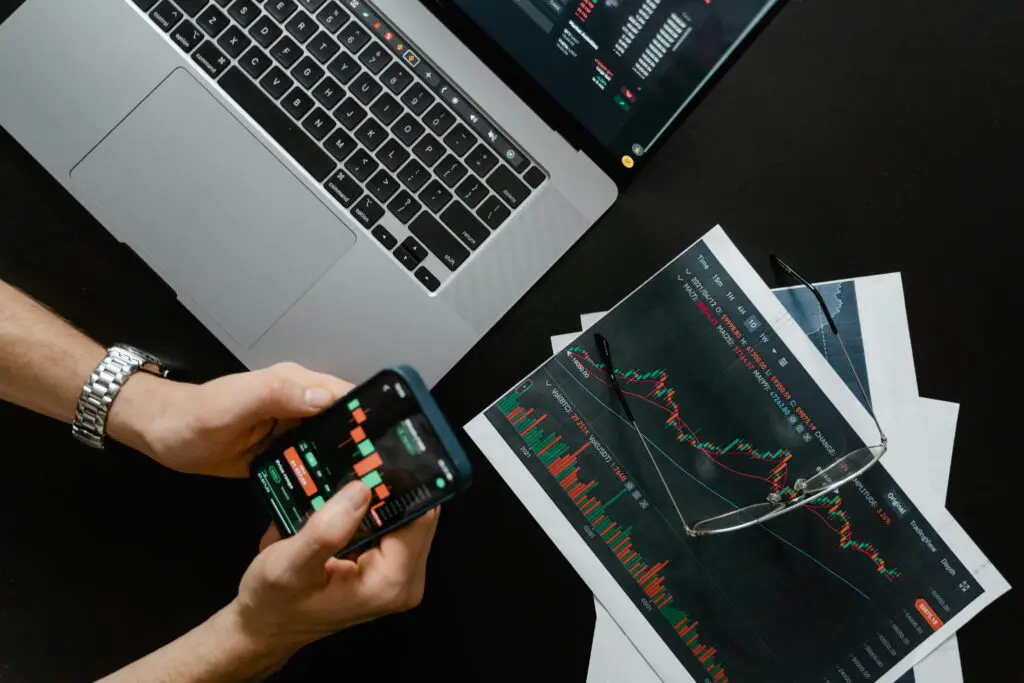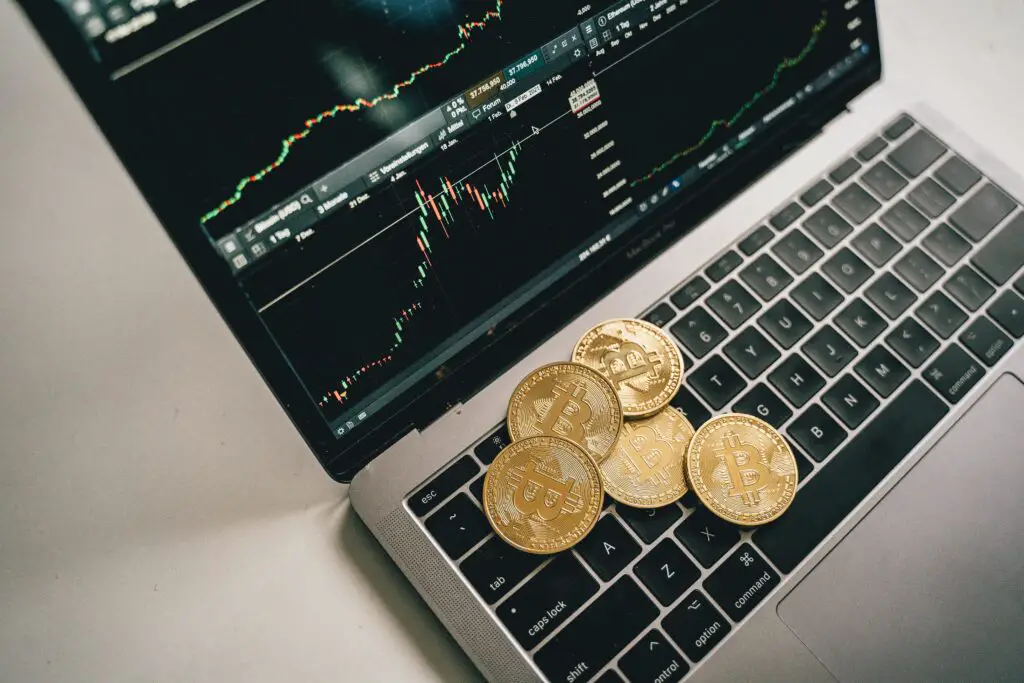Trading strategies are essential for people new to the financial markets who want to learn how to handle them. Having a good plan can make all the difference in your success, whether you want to invest in stocks, forex, or cryptocurrencies.
Understanding Risk Management
Before diving into specific trading strategy, it is necessary to understand the significance of risk management. Long term success in the markets can be ensured by practicing effective risk management, which can assist in reducing losses and protect your wealth. By implementing simple risk management ideas, beginners can trade with confidence and peace of mind.
Long-Term Investing
Purchasing and retaining assets for a considerable amount of time usually years or even decades is the essence of long term investing. Beginners who want to take a passive strategy to invest and are prepared to endure volatile markets in exchange for possible long term rewards will succeed with this method.
Principles of Long-Term Investing:
A: Fundamental Analysis
Fundamental analysis is a tool long term investors use to assess a security’s underlying worth. Examining elements including a company’s financial stability, earnings possibility, advantages over competitors, management group, market trends, and macroeconomic factors are all part of fundamental research. Investors can find cheap assets with significant development potential and long-term viability.

B: Patience and Discipline
Patience and discipline are necessary for long-term investing. Long term investors concentrate on the underlying fundamentals of their investments and the long term prospects of the companies or assets they own rather than responding to short-term market swings. Because they are confident in the underlying worth of their assets, they are prepared to hang onto their investments despite fluctuations in markets and economic downturns.
C: Reinvestment of Dividends
Dividends from their assets are frequently reinvested by long term investors back into the market. As dividends are used to buy more stock shares, mutual funds, or exchange-traded fund units, reinvesting them enables investors to compound their earnings over time. Repeating this process can increase an investment portfolio’s overall return over time, which can be quite beneficial.
Day Trading
For beginners who are disciplined and aware of market patterns, day trading may be quite rewarding despite requiring rapid decision making and a high risk tolerance.
Critical Characteristics of Day Trading:
A: Short-Term Timeframe
Day traders use hours, minute, or even click charts to trade on short timescales. Their main goal is to close out their positions before the end of the trading day.
B: High Frequency
Day trading involves placing several trades during the day in an effort to profit from slight changes in market price. In a single trading session, day traders could enter and exit positions hundreds or even thousands of times.
C: Technical Analysis
One of the main tools used by day traders to find opportunities for short term trading is technical analysis. To forecast future price changes and make trading decisions, day traders examine price charts, patterns, and technical signals.

Swing Trading
Making money from the economy’s short to medium term price fluctuations is swing trading’s main goal. Traders keep onto trades for a few days to weeks while they watch market fluctuations for opportunities to enter and exit positions.
Trader Trends
Identifying market trends is the aim of trend trading. Beginners can utilize technical analysis tools to identify trends and capitalize on the momentum by purchasing assets as their value increases and selling them when they start to decrease.
Rapid Trading
The main goal of momentum trading is to invest in assets that are exhibiting significant upward momentum. Traders ride the trend until it exhibits symptoms of correction in an attempt to profit from its continuation.
Critical Characteristics of Rapid Trading:
A: Algorithmic Trading
Algorithms, or automated trading systems, are primarily responsible for rapid trading. These systems are designed to evaluate market data, recognize trading opportunities, and carry out deals immediately without the need for human interaction. These algorithms perform split-second trading judgments based on preset parameters and criteria using complex mathematical models, statistical analysis, and machine learning approaches.
B: Market Development
Market development is a popular way used by quick traders. In this tactic, they repeatedly check buy and sell prices for a particular asset, hence supplying volatility to the market.
C: Trading in Arbitrage
In order to make money without taking on any risk, arbitrage traders take advantage of price differences across other marketplaces, exchanges, or trading venues. In order to seize price differentials before they disappear, quick traders employ complex arbitrage algorithms to spot arbitrage opportunities and instantly execute deals.
D: Utilizing Statistics to Make Decisions
Statistical arbitrage is a trading strategy that capitalizes on temporary departures from statistical correlations or linkages between various assets or market variables. In order to find cheap assets or trading opportunities, rapid traders employ statistical arbitrage algorithms. They then execute trades based on statistical abnormalities or patterns.
E: Analysis of Order Flow
Quick traders closely examine order flow data, such as transaction volume, market depth, and order book interactions, to understand the market’s mood and predict future price moves. By keeping an eye on order flow immediately, rapid traders can recognize huge trades or order inequalities, track changes in market liquidity, and modify their trading tactics.
Investing with Value
Purchasing assets at a discount with the hope that the market would eventually realize their total value is known as value investing. This fundamental analysis-based method is perfect for new traders who want to take a cautious approach to trading.

Contrarian Investing
Investing contrarian is taking positions that oppose the sentiment of the market. Beginner investors have the opportunity to profit from market errors and attain returns above average by purchasing assets that are presently out of favor.
Trading Options
Beginners in options trading can make predictions about the movement of asset values without really holding the underlying asset. Using options, traders can reduce their adverse risk and profit from price changes.
Trading Forex
Forex trading rotates around the acquisition and disposal of foreign currencies on the foreign trade market. Beginner traders can profit from worldwide economic developments by trading currency pairs continuously.
Cryptocurrency Trading
Cryptocurrency trading is the purchasing and selling of virtual currencies such as Ethereum and Bitcoin. These currencies give new traders the opportunity to profit from price fluctuations in an open market despite their volatility.
Critical Characteristics of Cryptocurrency Trading:
A: Decentralized Market
Decentralized cryptocurrency exchanges serve as platforms for trading in digital currencies, enabling immediate interaction between buyers and sellers, eliminating the need for intermediary organizations. Because of this distributed structure, traders have more control over their money and interactions, but they must constantly be on the lookout for security and fraud concerns.
B: High Volatility
The cryptocurrency market is renowned for its extremely volatile nature, as prices frequently undergo significant swings within a brief period. Although volatility can be profitable, it also raises the possibility of large losses. Therefore, traders must use sensible risk management techniques.

C: Having enough cash on hand
Understanding availability is crucial for making informed choices regarding investments. Commonly used cryptocurrencies like Ethereum and Bitcoin frequently have strong liquidity, allowing traders to add and exit positions fast and with little disruption.
Diversification
Diversification means sharing your money around different markets and types of assets to lower your risk. By spreading their investments, beginners can lessen the effect of market changes and avoid losing money.
Technical Analysis
Analyzing past price and volume data is a way to gain knowledge about financial market trends. Newcomers to the field can utilize various tools and signs to identify trends, various levels of opposition and support, and potential entry and exit points.
Conclusion
Thinking of trading thoughtfully and methodically is important for beginners to make it profitable. By putting the proper trading methods and risk management skills into practice, beginners can improve their chances of success in the markets. Never stop learning, always be educated, and start small.